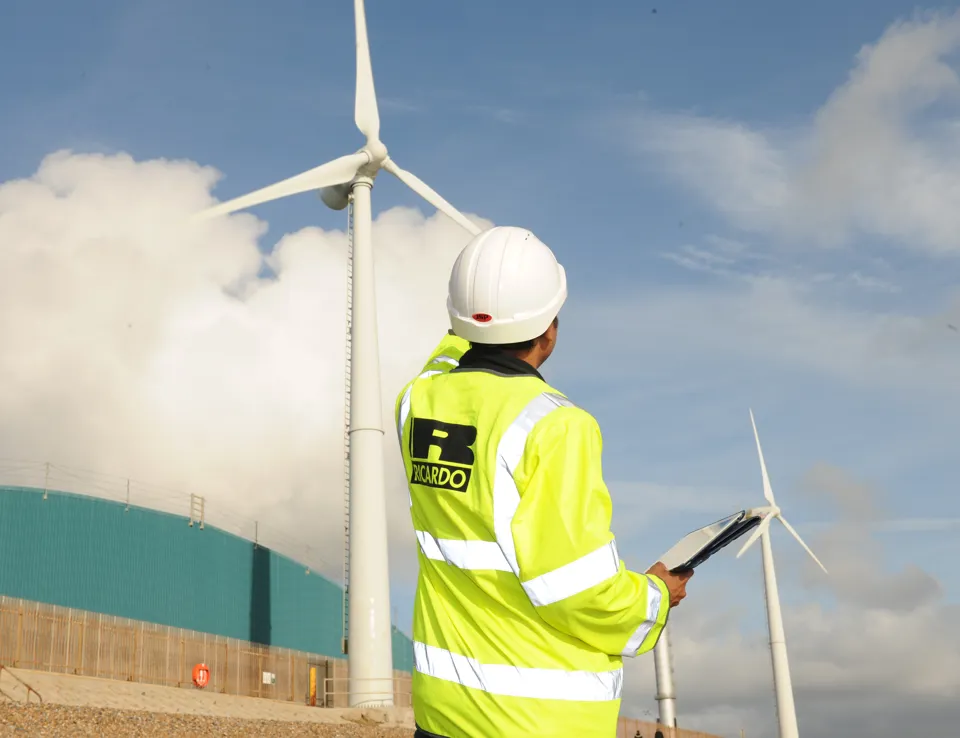
Sustainable Chemical Risk Management around the World
26 Mar 2024
In a world grappling with the implications of climate change and striving for sustainability, the chemical industry stands at the forefront of transformation. Clear challenges in the sustainability strategy for all chemical organisations lie in safety, risk management and compliance with new technologies, new materials and new policies. In this blog, Jon Lang shares his insights into the truly global challenges facing the chemical industry and the importance of worldwide collaboration if we are to find effective solutions.
The challenges facing the chemical industry are truly global in nature, requiring a collective effort from all stakeholders. Recent meetings with clients by colleagues in Malaysia, Japan, Finland, and the USA, show that the need for sustainable chemical risk management is universal. We all have a collective responsibility. In this age of societal, geo-political and environmental crises; it is imperative that all parties engage in discourse with honesty, integrity, and kindness so that we might find solutions to the multiple complex challenges we face.
Recently, I had the privilege of attending the DGO and Hazardous Materials ANZ conference in Australia, where leaders from emergency services, the chemical industry, and regulatory bodies converged to discuss the pressing issues facing the chemical sector. Chaired by Debra Kirk from the National Transport Commission, the conference shed light on the common hurdles faced by the chemical industry across Australia and New Zealand – but also globally in their journey towards safe decarbonisation.
It was clear from the conference that there is a universal pressure on chemical businesses to adopt tangible sustainability plans and environmental, social, and governance (ESG) policies. Stakeholders and investors are demanding not only compliance but ongoing progress and monitoring, signalling a shift towards a more accountable and transparent approach to sustainability. Central to discussions was the importance of managing risk and ensuring safety across the chemical supply chain where collaboration among stakeholders emerged as a recurring theme. In an industry where safety is non-negotiable, cooperation along the supply chain is crucial for effective risk management.
It was great to hear from Libby Chaplin, from the Battery Stewardship Council, on the work being done to reduce risk through education and used battery collection. The case study from Brett Lemin of the Canberra Recycling Centre fire and hazards that still exist demonstrated the applied approach of turning ‘crisis into opportunity’. Most of the changes in risk management have been instigated following a crisis – and today’s climate crisis is no different as it also presents opportunities.
New opportunities, new challenges
Enzo Alfonsetti from Energy Safe Victoria commented that we now must also navigate ‘the hydrogen horizon and emerging technologies’. His awareness of current hydrogen activity across Australia was really interesting to hear – just as there seems to be an understanding of the risks and hazards of one challenge, it grows and evolves! A topic which will gain more focus at the South Australian Hydrogen Conference - SAHy™.
The conference also delved into specific challenges facing the industry, such as the safety risks associated with electrification and lithium-ion batteries – a topic that was discussed at length during our event last year.
Traditional hazards like ammonium nitrate continue to pose significant risks in places like Australia, where industries such as mining and agriculture dominate. Erin James from the Department of Energy, Mines, Industry Regulation and Safety shared insights from a case study on an Ammonium Nitrate Emulsion (ANE) tanker explosion, serving as a ‘safety wake-up call’ and I am certainly looking forward to the guidance from this incident to share with Ricardo’s emergency response team.
I was grateful to have the opportunity to speak at the conference about the links between telephone emergency response support and the UN sustainable development goals; how this protects people, environment, assets and reputations which ultimately ‘is our duty of responsible care under ESG policies’. It was insightful to hear the challenges the chemical industry here are having with providing advice remotely given the ‘significant distance between experts and incident sites’.
Just getting to an incident is a challenge, let alone resourcing it with the appropriately trained officers and equipment. Throughout my time in Australia, I met with representatives from five different fire services, and all are facing similar challenges. Collaboration and skill development are going to be key in the coming years – an opinion shared by many, including Megan Stiffler, Deputy Commissioner for Fire & Rescue NSW, who highlighted the evolving nature of hazmat environments and how they are overcoming this through ‘awareness, collaboration and training’.
Wade Kimpston from Yara International emphasised the value of emergency response team training in mitigating risks effectively. He highlighted the effectiveness, discussing the value vs expenditure question that is often key to preparedness and response, how to manage the development and recognise the benefits. It was fantastic to see how response training at Yara’s ammonium nitrate production site enabled a front-end loader fire to mitigated efficiently with minimal impact due to training. Similarly, Rajesh Singh from Rio Tinto emphasised the need for robust major hazard risk management and governance across the supply chain. A key element of which is the ability for an organisation to respond to an incident with advice and support no matter where in the supply chain it happens. It was clear from Rajesh that this not only is key for safeguarding organisational excellence, but fundamental to protecting the bottom line.
Emerging trends in sustainable chemical risk management
Emerging trends like data analytics, artificial intelligence, and policy developments (such as the EU Green Deal) are shaping the future of the chemical industry. Technology leaders like Manohar Esarapu from the City of Port Phillip are leveraging technology to enhance hazardous materials safety. As ports are a key part of the future decarbonised world, it was refreshing to hear that technology leaders see managing the risk from hazardous materials as fundamental. Manohar also spoke about artificial intelligence and how technology industry collaboration throughout the chemical supply chain is vital to support transformation.
Of course, it is not just technology that is driving change in the industry – policy is also playing a significant role in impactful change. The EU Green Deal is driving significant development in Europe and beyond, as evidenced by Dr Rabi Gol from the Environment Protection Authority Victoria, who spoke about Green Chemistry, highlighting hazardous materials risk management as part of the new regulations being put in place. The links here were clear to the Safe and Sustainable by Design concept, a key component of the EU Chemicals Strategy for Sustainability, and it’s exciting to see the global development of the chemical industry in this space.
The challenges facing the chemical industry are truly global in nature, requiring a collective effort from all stakeholders. Recent meetings with clients in Malaysia, Japan, Finland, and the USA, show that the need for sustainable chemical risk management is universal. We all have a collective responsibility. In this age of societal, geo-political and environmental crises; it is imperative that all parties engage in discourse with honesty, integrity, and kindness so that we might find solutions to the multiple complex challenges we face.
At Ricardo, we are committed to providing innovative solutions to these complex challenges faced by the global chemical industry. From chemical response to capability development and sustainability initiatives, we are dedicated to creating a safe and sustainable future for all. If your organisation is interested in exploring our chemical risk management support or learning more about our sustainability efforts, we encourage you to reach out. Together, we can build a safer, more sustainable world for generations to come.




 Follow Ricardo Chemical Solutions for regular updates
Follow Ricardo Chemical Solutions for regular updates





